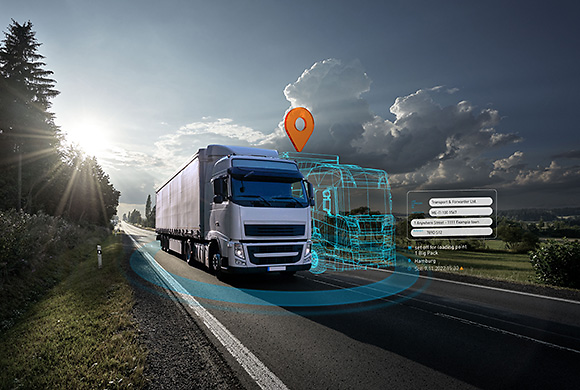Challenges and Potential of Supply Chain Digitalisation
Connecting digital transport and warehouse logistics systems offers a great deal of potential for improving costs and efficiency for manufacturing and trade companies, yet barely anyone does it.

Digital communication between shipping agents and transport or logistics companies remains, despite attempts to the contrary, analogue in nature. When media are not connected, digitalisation is often cut off. Loading docks are an excellent example. Palettes and delivery notes are exchanged, papers are signed, and it is then and only then that the goods are considered to be the responsibility of the recipient. We are a long way away from supply chain digitalisation. And yet a continuous digitalised process would be incredibly valuable on the loading dock, not just during the pandemic.
Why are shipping agents and transport interchanges still carrying out logistics business as they always have, even though they have long since switched to digital communication with customers and business partners in other areas, so much so that it has become part of daily life? Because: the true point of transfer between receipt of goods, or dispatch of goods and the vehicle transporting said goods is many faceted and complicated. And communication between the driver and warehouse workers is similar. This means that a lot of order information is still recorded by hand. Only infrequently do logistics actors have the option of transferring data from a Warehouse Management System (WMS) directly into a Transport Management System (TMS) and vice versa. Often, there simply isn’t an interface available for the job. Not only that, many programs are not even capable of automatically communicating with others.
But now more than ever, in the midst of the corona crisis, direct contact between drivers and logistics employees represents a health risk. No surprise, then, that many companies are doing their best to avoid such contact. At the moment, personal contact for handling and processing transported goods is only justified when strictly complying with safety and hygiene standards. But it is absolutely possible to transfer responsibility for transport goods without the need for personal contact during the loading or unloading process. You simply need suitable software with applicable interfaces.
Interfaces are key
Interfaces are increasingly important for companies along the delivery chain. In order to design a supply chain that is as economic and efficient as possible, we need comprehensive digitalisation covering the path from product manufacture to storage and transport logistics and ending directly with the customer. The more this virtual path mirrors reality, the easier it is to ensure paperless mapping and management of the supply chain, meaning no need to switch media. Total digitalisation of all order information processes increases efficiency and transparency within the supply chain (key term: End-to-End-Visibility), fundamentally improving safety and performance. In this way, logistics processes can be connected to intralogistic processes, the majority of which are now automated.
A clear definition of the data to be exchanged is key
One major point to ensure functional digitalisation and successful connections is a clear definition of all data to be transferred. Every program has its own source code which defines all parameters. This begins with the input of master data, continues with entering details such as the weight of the products to be transported and ends with information on the payment method. Each program speaks its own language, so Application Programming Interfaces, or APIs, are required to ensure that your program and the program run by your business partner can ‘speak’ to each other. APIs ensure that the different software solutions used by you and your contractual partners can exchange order information without issue. Every detail is clearly described within the API. And we mean every detail, such as a precise definition of weight measurements. After all, you need to know whether the weight of the freight has been entered in kilograms or tonnes. This precise definition is thus applied to all data that needs to be exchanged as part of the delivery chain. The digital delivery chain must match reality, 1:1. Only then can the data be exchanged without errors.
Every employee must be invested in digitalisation
So what are the prerequisites for ensuring that transport and on-site logistics processes can connect to one another? In order to perfectly and virtually mirror reality, every employee in the process must be on board. Without transparency on all levels, shipping agents as well as transport and logistics companies will have a difficult time mapping their work digitally. The issue is often missing pieces of information known only to warehouse workers, drivers and dispatchers. Information such as how best to contact the customer, and when, as well as which documents they insist on having, are decisive for optimal digitalisation and a successful transformation.
More articles on this topic:
Reassessing existing supply chains
